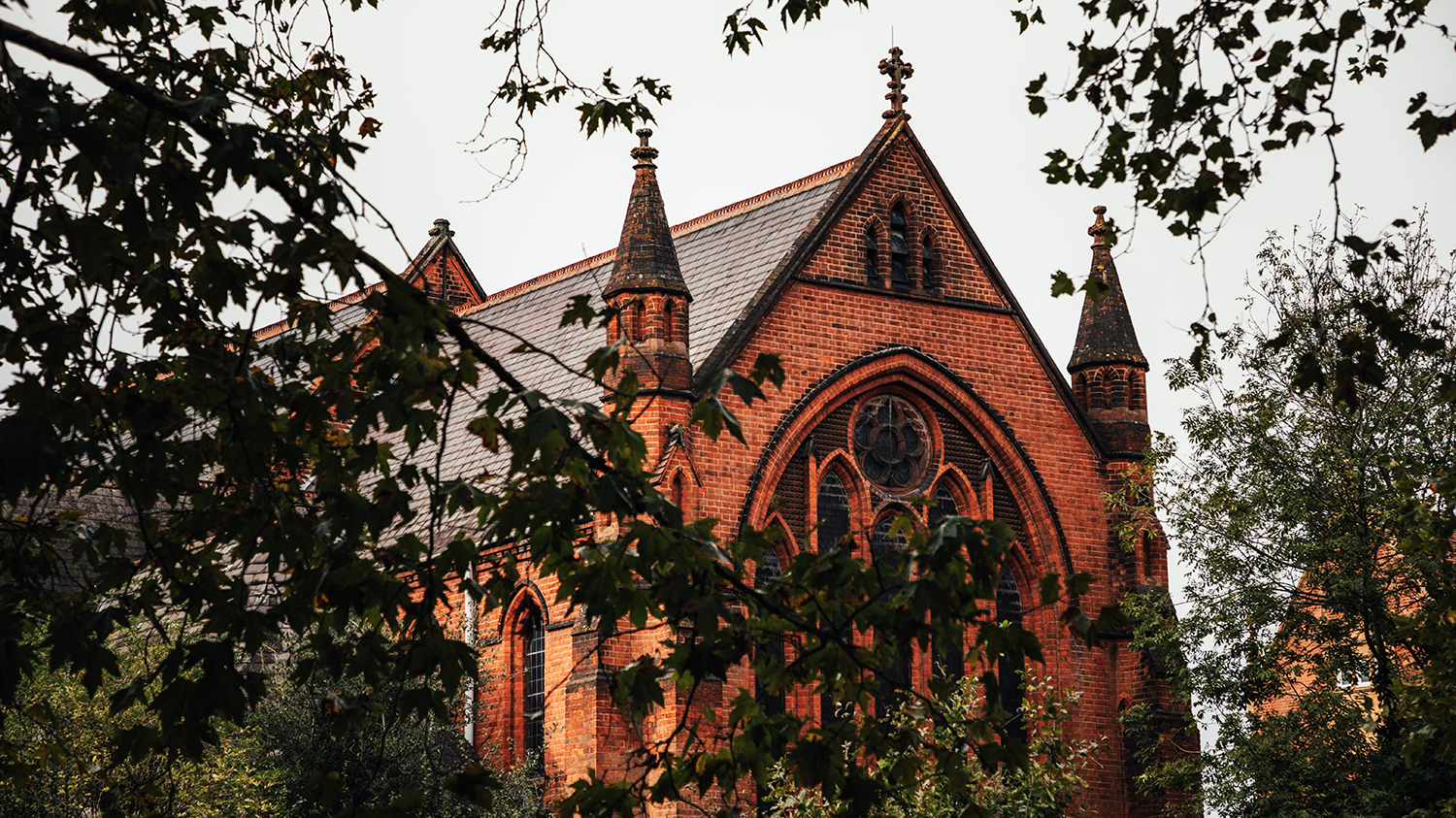St Saviour’s Church dates back to 1886, when a corrugated iron hut was put up on the north-east corner of what later became Wendell Park, and a small congregation started meeting there.
The hut was part of a mission to the area by Christ Church in Lancaster Gate, which was popularly known as ‘the thousand pound church’, because of the huge sums donated every Sunday by its wealthy Bayswater congregation. The mission was run by Revd Alfred Long, who became the first incumbent when the parish of St Saviour’s was formed in November 1891.
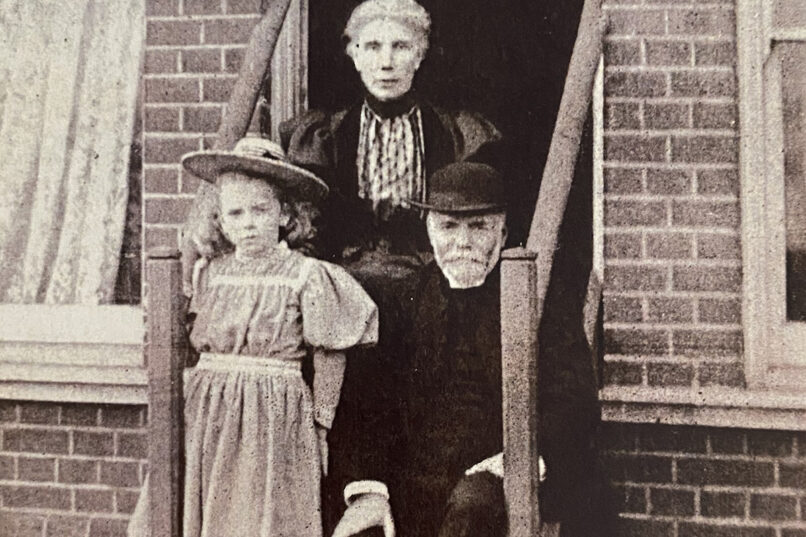
In 1888, work began on building the church, using bricks produced by the local brickworks, and in May 1894 the newly completed church of St Saviour’s, with seating for 502 people, was consecrated by the Bishop of London, Frederick Temple. Many of the familiar streets of the area had not yet been built, and the church was surrounded by market gardens, orchards and brick fields. As late as the 1950s, St Saviour’s was still known to locals as ‘the church in the fields’.
While the building was taking shape, the Church Commissioners offered the local authority four acres of land right next to the church, and in 1896 this was opened as Wendell Park, complete with a playground, a park keeper and several gardeners.
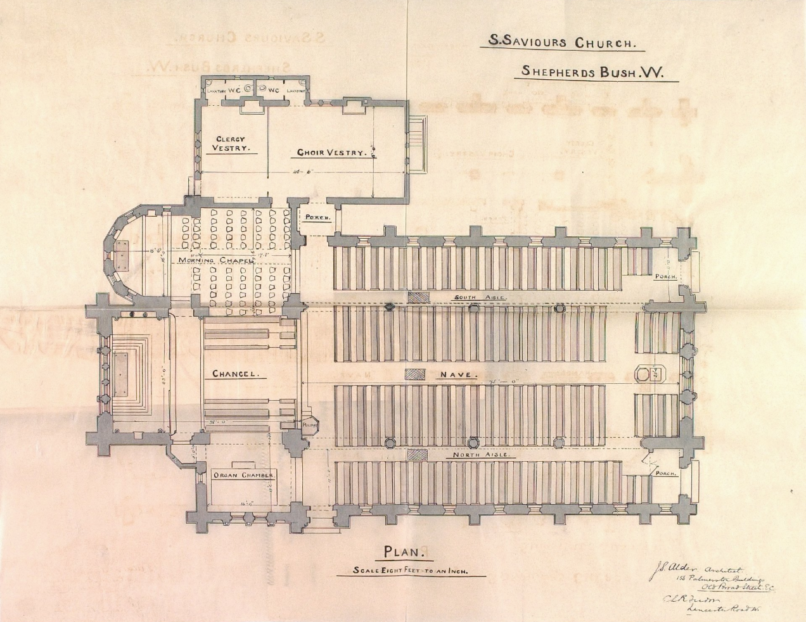
The church and vicarage were designed by the architect John Samuel Alder, who went on to build many churches across London as the city expanded at the end of the 19th century. Like many of Alder’s churches, St Saviour’s is open and spacious, built in a simple imitation of Early English style. One of the details he created for the church, a quatrefoil window (the shape of a four-leafed clover), which is repeated in the roof and elsewhere, has recently been used to create the modern logo for St Saviour’s, seen at the top of this page.
Over the next two decades, St Saviour’s became a thriving centre of the local community, with a capacity congregation, four services every Sunday, a very large Sunday school, a choir, a cricket club, a drum and fife band, a women’s union, and clubs for young women and working lads. The church also provided help for people facing hardship in the days before the welfare state, with a soup kitchen, a blanket club, a coal and clothing club, and a band of hope, encouraging people to ‘sign the pledge’ and give up alcohol.
All this was made possible with the support of Christ Church, Lancaster Gate, which continued to provide funds and volunteers, and also supplied the church’s first four vicars. But sometime between the First and Second World Wars, the relationship between the two churches came to an end, and St Saviour’s had to go it alone. The church entered into a season of decline.

By the mid-1960s, St Saviour’s was a failing church. It had a huge and dilapidated building whose small congregation could not afford to maintain it. When the vicar, Thomas Wheeler, died suddenly in 1966, it was thought the church would close. A local newspaper reported that ‘for sale’ signs had been hung on scaffolding outside St Saviour’s as a joke, and the church had to issue a statement to say that it was still in business. But it was more a statement of faith than fact.
Things changed the following year, when new vicar John Cotton was given the challenge of breathing new life into the church. His dynamic ministry saw a revival in people coming to church, and also a complete rearrangement of the building. In 1970, the nave was divided in two, with new halls filling the west end of the building, leaving a still sizeable worship space in the east end. To pay for the work, the parish hall, a separate building to the west of the church, was demolished and the land sold for a new housing development.
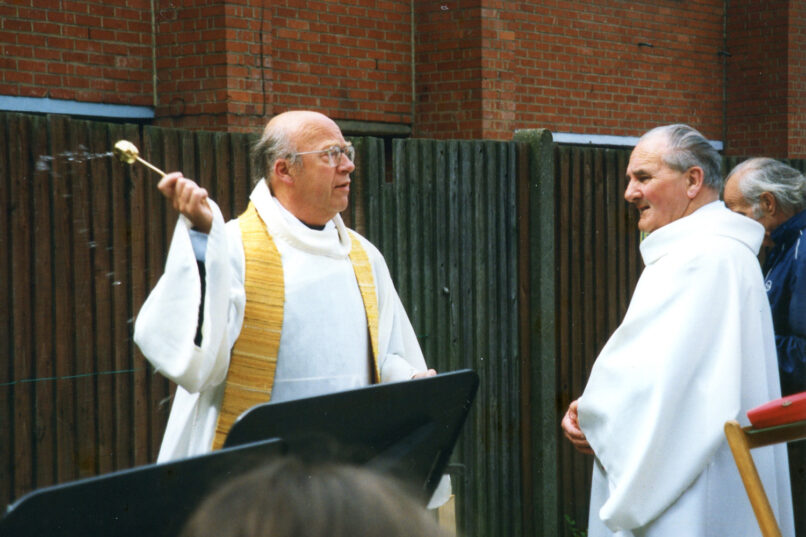
Another vicar who brought renewal and change was John Wheeler, who came to St Saviour’s in 1980. He and his wife Brenda were greatly loved during their 16 years in Wendell Park, and served the parish in many innovative and creative ways, not least by establishing the work of The Upper Room, a charity which works with homeless people.
Simon Tuke, Chair of The Upper Room, says that John and Brenda ‘felt there had to be a better way to help those who came knocking on the vicarage door than making sandwiches in their kitchen. Initially they installed a trestle table in their garage and served meals there, then took over the space above the church hall that The Upper Room occupies to this day.’
John came to St Saviour’s with a long-standing connection with Africa. His passion for social justice saw the church help set up a kindergarten for displaced Palestinian children in Gaza. During his time as vicar, many African students, priests and refugees came to St Saviour’s to stay and preach.
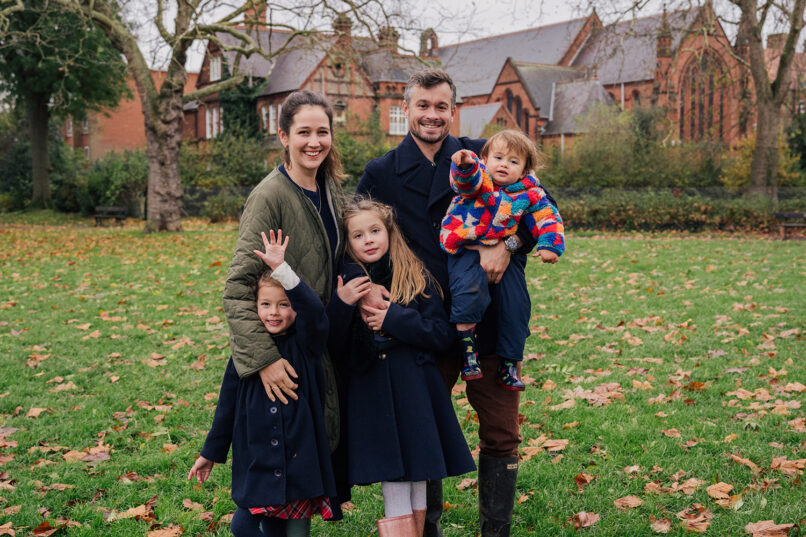
Our current vicar, Revd Chris Lee, came to St Saviour’s in 2015. He was sent to revitalise the existing church congregation by bringing with him a committed group of young people from the Holy Trinity Brompton church network. Under his gifted leadership, St Saviour’s was reestablished as a vibrant local church community, whose strength is in its many children, young people and families. The church continues to honour its broadly catholic spiritual roots, but also offers charismatic worship with contemporary music, preaching on the weekly Bible readings, and a congregation which enjoys being together.
The story of St Saviour’s continues, but we are grateful to God for all the ways our church has enriched the local community since it was first planted in a corrugated iron hut in 1886.
Incumbents of St Saviour’s
1894 – Alfred Long
1898 – Jacob Anastasio Forest
1900 – Arthur Carsten Holthouse
1903 – George Craggs
1927 – Walter Marshall Carrington
1949 – Thomas Percival Wheeler
1967 – John Wallis Cotton
1975 – John Arthur Pelling
1980 – John David Wheeler
1996 – Madeline Judith Bulman
2005 – David James Wheeler
2015 – Christopher John Bodell Lee
